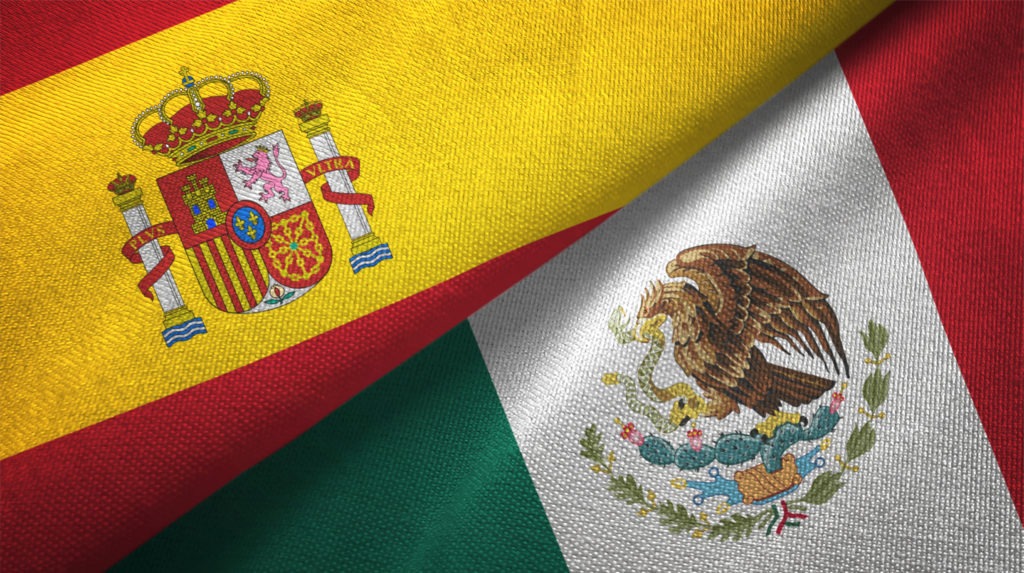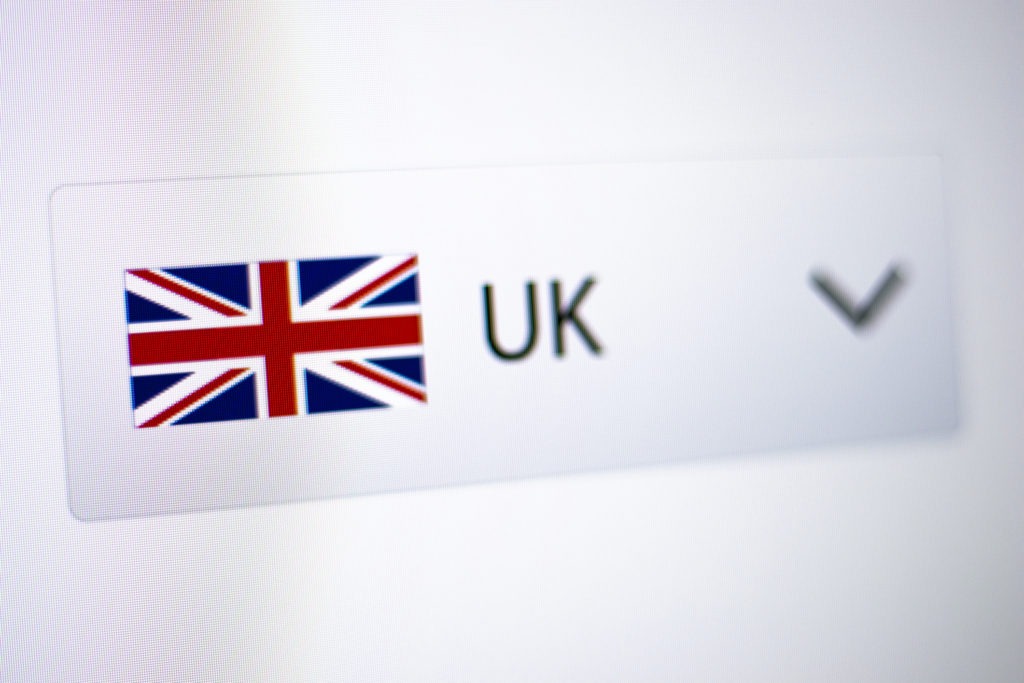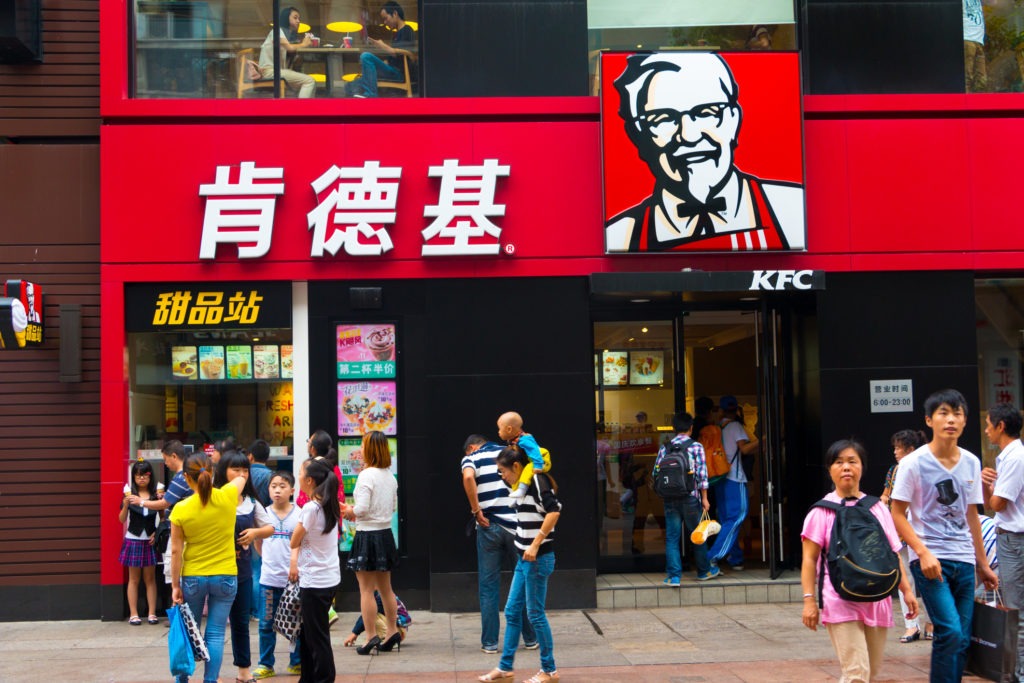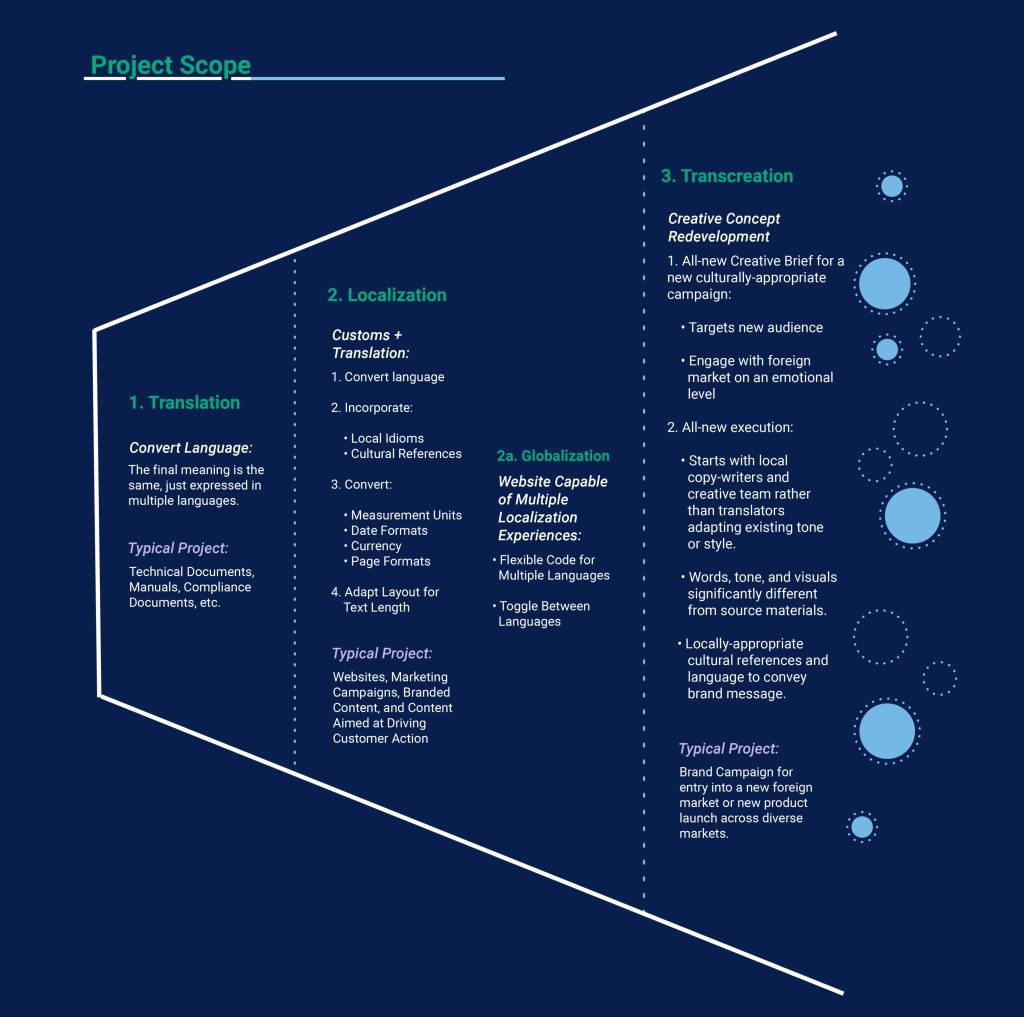
The Dollars, Cents, Yen and Pounds of Keeping Translation Costs in Check
Articles
・16 min read
YES! And Here’s a Simple Checklist Approach to Identifying the Needs for Your Current Project AND Future Needs
So your manager asks you to get some translation done for a product or service. You do a little research and the trail of breadcrumbs leads you from “translation” to “localization” and on to the even more confusing “transcreation.” OK, so what gives, what are the differences and which do I need to make my current project a success?
Glad you asked, because understanding what these terms will help you become the go-to expert on localization and translation in your organization – not to mention drive real results in your next international effort.
“Translation” is the process of rendering text from one language into another so that the meaning is equivalent.
“Localization” is a more comprehensive process and addresses cultural and non-textual components as well as linguistic issues when adapting a product or service for another country or locale.
“Transcreation” is a re-engineering of your brand promise to make it engage with a foreign market on an emotional level.
Sounds confusing? Let’s flesh out some examples of localization and translation:

English: What is your name?
Spanish: ¿Como se llama? (Literally: how are you called)
The final meaning is the same, but how it is expressed in each language, is different.
When content is translated, it is kept consistent and accurate when transferred from the source text into the target language. While sentence structures and grammar are, of course, adjusted, it is important for the translator to stay true to the original content. Mostly technical documents, like technical publications, manuals, compliance documents, and such are translated. In some cases — think of information and directions of use for medication, for example — the right word choice can be of utmost importance. Translators are often also experts for certain subjects.
If so, a basic machine or human translation job is probably in order.

What is localization? It involves more than just translation. In fact, you can think of localization as starting with translation and then moving deeper to address communication factors such as local idioms and cultural references plus technical communication issues like text length, measurement units, date formats, and page sizes. Effective localization of your web presence even incorporates back-end issues such as SEO and social media considerations tailor to your new market.
But let’s not get ahead of ourselves – consider the above example of communicating tonight’s dessert to our British and American friends: both speak English so do we need to translate? No. But do we need to localize – or should we say localise – to communicate to both markets effectively:
Every market has its own formalities of communication – and ignoring them can lead to some serious confusion on the part of your new customers:
Imperial vs. metric measurements: If you have an American document that mentions imperial measurements such as feet, you’ll have to give metric equivalents in some cases (note that the UK has adopted metric but also clings to imperial).
Currency units: These also require localization, such as changing from $100 to £100 pounds sterling. And, to show equivalent amounts, you would need to do a currency conversion, such as “$100 (£75)”.
Paper size: A printed document might be designed for European A4 paper (210 by 297 mm, or 8.27 in × 11.7 inches) instead of American letter-size (8.5 x 11 inches). Those slight differences in size can impact formatting and page breaks.
Date formats: You’ll need to know about the differences in date formats: does 4/5/22 mean April 5 (as in the U.S.) or May 4 (as in the UK)? Those differences can be crucial.
Text length: In localization of documents and software, you’ll need to prepare for differences in text length resulting from translation, as in the Spanish example at the beginning of this blog post. Translation from English into other languages can result in the text expanding from 30% up to 100%. So, you’ll need to allow for flexible text length in your product or document.
We don’t blame you if you’re starting to get confused as the localization and translation industry has a language all it’s own. But we’re here to make it understandable.

“Locale” is another term you’ll hear frequently when taking your company global. A locale is a combination of a language and the place where it is spoken. Adapting for the locale includes both the translation and the differences in culture, format, and usage.
Locale is important because some languages are spoken in several different regions. For example, Spanish is spoken in many places around the globe, so in order to reach your target audience effectively in each region, you must specify which locale (language and country) you’re targeting. Localized content for Mexico would be different than localizing content for Argentina or Spain. The same applies to French – after all, French in France is different from French in Canada. Brazilian Portuguese, for example, uses different wording and grammar from Portuguese spoken in Portugal, such as você or tu to mean “you.”
As with British and American English, native speakers of these languages can spot immediately which version of the language you are using. These language differences can make a big impact on the acceptance of your product or service.
When you localize your product, you are relocating it to a new country or region. You want your audience to feel like your document or product is made for them. When the product is localized to meet their needs, they’ll have a positive experience with your product.
Localization and translation agencies use standard locale codes to indicate the language and country or region. A few examples:
en-US = American English
en-GB = British English
es-ES = Spanish (Spain)
es-419 = Spanish (Latin America)
es-MX = Spanish (Mexico)

One more term to throw in for good measure. “Globalization” or “website localization” is the process of making your website world ready or internationalized. While marketers know that it is difficult or impossible to be all things to all people, the goal here is to make the website functional and accessible to a global audience that is not limited to just a few countries or locations.
Global companies that make the effort to reach their target personas in their native languages in their countries will win market share. Making the investment to create localized websites demonstrates that you care about your global audience and that you want to provide them with the best user experience. It also helps you attract and retain more loyal customers across the globe.
If you’ve checked most of the boxes, your project is on the localization track. And we’re here to help. An important component of website localization is in-context review by a native speaker who has knowledge in the subject matter. During the localization and translation process these in-country linguists evaluate the translated text within the website user interface and can also evaluate how the translated site looks on multiple devices.
Sometimes, it is not enough to simply adapt the tone and style of the source content to a new locale. Instead, the intention of the campaign and overarching ethos of the brand has to be creatively transformed to port over the emotional connection to customers who have a completely different set of cultural norms and understandings.
This is when transcreation comes into play. While the goal still is to drive customers, the message with which that goal can be achieved might differ significantly from the original.
One of the historical examples of this was the introduction of the Chevy Nova to Mexico. In English the word implies an other-worldly experience of energy and speed. But “No Va” translates to “Does not work” in Spanish.

Yet another example is the old KFC tagline, “Finger linkin’ good.” In English, It’s a solid brand promise that you will love every tender morsel. But translate the words to Mandarin and you are left with the message, “Eat your fingers off”.
That’s why transcreation projects usually start with a creative brief, not with translating content from the source text into another language. And it is copywriters crafting the new message, not translators adapting tone or style. In the end, the creative concept gets recreated for a new target market. The words, the tone, and the visuals might be very different from the source content depending on the target audience and what message resonates with it.
And there are successes in the realm of transcreation. The iconic “Got Milk?” campaign that got across the message that milk was an essential ingredient in the diet of Americans of any age had to have a serious re-engineering to appeal to the Latino community.
The direct translation to Spanish would have asked people “Are you lactating?” Obviously, that’s not the right question – especially in view of the near disastrous connotation that it tells Latino moms (the traditional sustenance provider in the family) that they are not providing. In the end, positioning milk as an essential part of the latino diet also meant tying it to a key component of latino culture: Family. The transcreation solution produced a more fitting tagline for the target market: “Familia Amor y Leche” (“Family, Love and Milk.”).

If you are still unsure which of these three services you should use for your international product or service we would be happy to talk. At Argos Multilingual we work with professional translators all over the world to translate content and make it culturally appropriate. Our translation and localization tools are designed to streamline the website translation and localization process so you can focus on your global marketing strategy. We also use resources like translation glossaries and translation memory to help reduce costs, enhance quality and save time by leveraging existing content.
Contact us to learn more about how we can help you reach a global audience.
What to read next...
Want to know more?
The latest industry news, interviews, technologies, and resources.
View all resourcesGet in touch
We are committed to giving you freedom of choice while providing subject matter expertise and customized strategies to fit your business needs.
Contact us